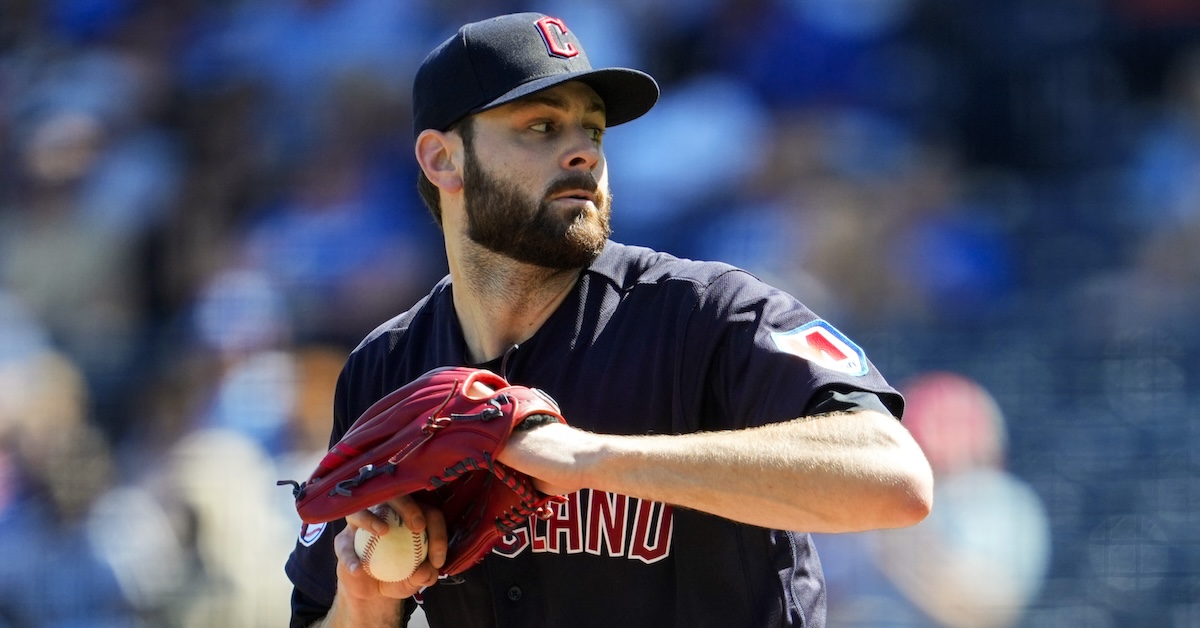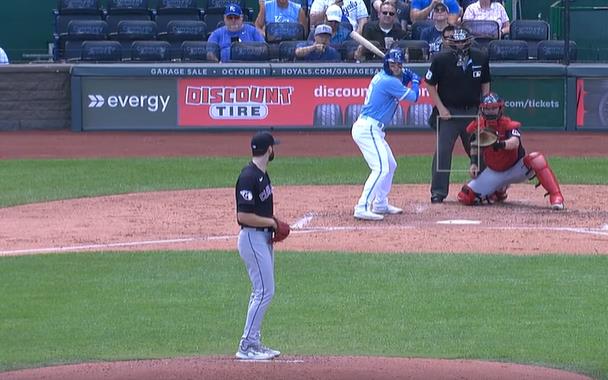
Jay Biggerstaff-USA TODAY Sports
After running his highest FIP since his breakout season in 2019, Lucas Giolito has secured a modified prove-it deal. Over the holidays, the right-hander signed a two-year contract with the Boston Red Sox worth $38.5 million. He will make $18 million in the first season and $19 million in the second; he can opt out after 2024. If he elects not to opt out, a conditional option kicks in for the 2026 season that is dependent on whether he throws at least 140 innings in 2025. If he does, it becomes a mutual option worth $19 million; if he doesn’t, it becomes a $14 million club option.
Despite Giolito’s 4.88 ERA, 5.27 FIP, and 41 home runs allowed (second to only Lance Lynn) in 2023, he was still perceived as a mid-rotation option entering free agency. Much of that was due to his above-average performance from 2019-21, but he has also proven he can stay healthy and make his starts. Since 2021, he is 16th in the league in innings pitched. His 184.1 IP with the White Sox, Angels, and Guardians in 2023 only further cemented his reputation. With Boston ranking second-to-last in the American League in starter innings pitched behind only Oakland, this was a practical match that came at a reasonable cost.
Giolito’s $19.25 million AAV is fifth among starting pitchers who have signed free agent contracts this offseason (excluding Shohei Ohtani), placing him in between the top and middle tier. Given that he hasn’t reached his 30th birthday, it seems plausible that he can keep up his volume while potentially improving his results and returning to the starter he was for a three-year stretch in Chicago.
After his first start with the Guardians in September (he was famously scooped up off waivers from the Angels, who had acquired him from the White Sox just five weeks prior), Giolito spoke with David Laurila about his season and impending free agency. In that conversation, Giolito was candid about his lack of execution in 2023, and how he hadn’t been able to command the anchor of his arsenal, his fastball-changeup combination. Giolito expressed that he wants to consistently command his heater up in the zone; for the changeup, the goal is more competitive pitches in the zone. Like any fastball-changeup combo, helping one will inherently help the other. As a high-release, big-extension pitcher, this is a natural path for Giolito, especially considering that the blueprint has already worked. To better understand how his fastball has fluctuated in recent seasons, let’s look at some qualities of the pitch:
Giolito Four-Seamer Characteristics
| Year |
Run Value |
Vert. Rel |
Hor. Rel |
Vert. Location |
Hor. Location |
| 2019 |
15.3 |
6.56 |
-1.26 |
2.74 |
0.14 |
| 2020 |
5.8 |
6.49 |
-1.26 |
2.91 |
0.22 |
| 2021 |
-0.4 |
6.40 |
-1.5 |
2.81 |
0.02 |
| 2022 |
0.3 |
6.36 |
-1.39 |
2.85 |
0.10 |
| 2023 |
-7.7 |
6.33 |
-1.19 |
2.93 |
-0.07 |
His fastball plays best when it’s at the top of the zone. Interestingly, his fastball was located higher on average in 2023 than in any other season since 2019 but was by far the worst in terms of value, though I’m not sure that was the primary reason for his struggles. Instead, I’d look to his horizontal location, and the trend of him throwing his heater closer to righties and further away from lefties. Since his breakout in 2019, Giolito had always neutralized left-handed batters, with his fastball-changeup combo the reason. Lefties had never posted a wOBA above .283 against him; that mark jumped to .334 in 2023. By moving the pitch further to the edge (likely due to his release point change), his two-pitch combo lost some of its in-zone consistency, especially the changeup. The trend started in 2022, and even with a slight bounce back this year, the changeup still struggled:
Giolito Changeup Characteristics
| Year |
Run Value |
Vert. Rel |
Hor. Rel |
Vert. Location |
Hor. Location |
| 2019 |
10.9 |
6.52 |
-1.31 |
2.14 |
-0.10 |
| 2020 |
1.7 |
6.48 |
-1.33 |
1.88 |
-0.12 |
| 2021 |
10.8 |
6.36 |
-1.59 |
2.04 |
-0.19 |
| 2022 |
-7.0 |
6.35 |
-1.44 |
1.88 |
-0.16 |
| 2023 |
0.6 |
6.29 |
-1.31 |
1.88 |
-0.27 |
Similar to the heater, the pitch moved progressively further toward righties as its performance dipped. In the two seasons where Giolito threw the pitch at its highest height on average, it’s been the most effective. Given Giolito’s tendency to keep the fastball up, a higher tunnel with the changeup is logical. But going back to its in-zone utility, 2022 and 2023 saw him have in-zone rates below 50% (45.0% and 49.2%, respectively) after he ran the pitch in the zone between 51.3% and 59.1% from 2019 to 2023. The nature of the tunnel is most deceptive when he can keep the pitch in the strike zone. All of this to say, the story that Giolito told Laurila a few months ago tracks very well. The question now is what he and the Red Sox can do to flip things back to what they were during his very good three-year run in Chicago.
Without any making any mechanical changes, my first thought would be to shift Giolito to the first base side of the rubber to ensure his pitches are moving on the side of the plate where he had success. Seems foolproof, right? The thing is, he has been on this side of the rubber for years. He can’t go any further! Here is a screenshot from a late September start:

Next, we might look to something mechanical that has had a direct impact on where he is releasing the ball or the angle his arm is at when he releases it. That makes me think of what we know about Giolito in general and what he did to become the pitcher he was from 2019-21. The most obvious thing is his abbreviated arm action. A big piece of unlocking his performance was getting his arm swing timing in line with the rest of his body by shortening it. If he got out whack in the last two seasons, perhaps it’s related to this, even if it’s not as drastic as his early career form. To analyze that, let’s do a video comparison of Giolito in 2021 versus 2023. The first two clips are from 2021 and the next two are 2023:
His arm was late during his run in Cleveland. Visually, when his lead foot stabilized on the ground, his forearm was still below 45 degrees. Ben Brewster from Tread Athletics has stated that an “on time” arm is between 45 to 90 degrees at contact/stabilization, while slightly late is from 25-45, and late is less than 25. In both Cleveland clips, Gio’s arm is hardly getting to 25 degrees when his lead leg block contacts the ground. In Chicago, he is hovering somewhere around 60 degrees, give or take.
Basically, we know what Giolito’s arm looks like when it’s on time. When looking at where he was in Cleveland, it’s clear he was later than is ideal for him. In terms of release point and command, it makes sense that he has lost some feel. His arm is in a different position than when he was succeeding. Trying to execute the same game plan with this difference, even if it is slight, can be difficult. The good news is that this change hasn’t affected his health or ability to maintain volume. The bad news is that if his body isn’t as mobile in some areas as it was in his mid-20s, these positions might not be as attainable.
Even if Giolito doesn’t make a return to his peak form from a few years ago, he is still a positive addition for the Red Sox. As their rotation is currently constructed, it’s highly plausible that he will lead the team in innings, as no other pitcher on the roster has ever thrown more than 180 in their respective careers. Giolito is a good start to raising their floor, but they need a sure-thing, high-quality pitcher. And while Chris Sale isn’t that pitcher anymore, trading him to Atlanta only further increases their need. What they do from here on will depend on their willingness to open their pocket book or deal from their core of position player prospects.
Source
https://blogs.fangraphs.com/the-red-sox-raise-their-floor-bring-in-lucas-giolito-on-a-two-year-deal/
 Backyard GrillingWeekend WarriorsAdvice from DadBeard GroomingTV Shows for Guys4x4 Off-Road CarsMens FashionSports NewsAncient Archeology World NewsPrivacy PolicyTerms And Conditions
Backyard GrillingWeekend WarriorsAdvice from DadBeard GroomingTV Shows for Guys4x4 Off-Road CarsMens FashionSports NewsAncient Archeology World NewsPrivacy PolicyTerms And Conditions
